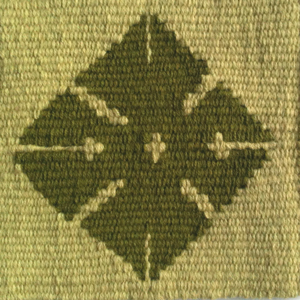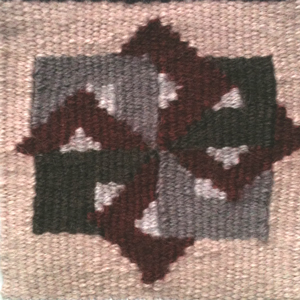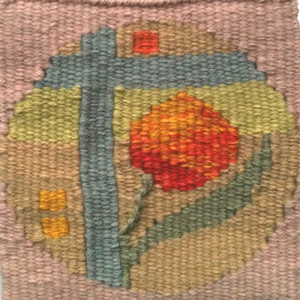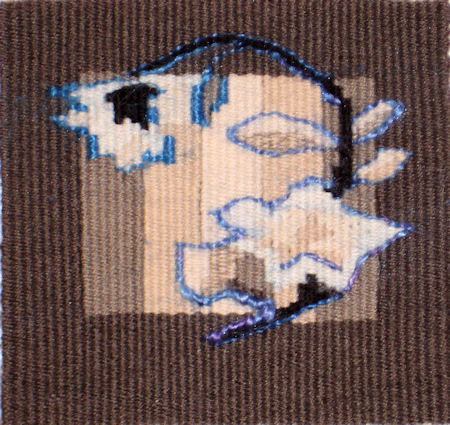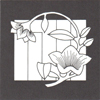Tapestry Weaving
Tapestry is a weft-faced weave. This means that the weft, which weaves in and out of the warps, is pushed or beaten down so firmly that it entirely covers or hides the warps. On a finished tapestry, it is traditionally only the wefts that can be seen and which form the design.
- Visit our Learning for Free page to view open education resources.
- Our Links page provides access to many external websites, including those of contemporary tapestry artists, national tapestry weaving organisations, commercial tapestry studios, exhibitions and much more
- For a free 15-page instruction booklet on warping a tapestry frame click here
Weft
Because tapestries are woven under very high tension and because the weft needs to be beaten down very firmly, the weft is usually a strong, non-elastic yarn with minimal 'bounce'. Usually, this means a worsted spun yarn rather than a woollen spun yarn (see below) or a robust yarn such as linen, cotton, silk or synthetic yarns.
Worsted Wool
Worsted wool is a yarn derived from sheep's fleece that is quite long from root to growing tip (the staple length). It has been combed until all the shorter fibres have been removed and the remaining long fibres all lie parallel to each other. It is then spun with a high twist keeping the fibres in line. The result is a hard wearing, robust woollen yarn with little or no elasticity or 'bounce'. Traditionally used for suiting fabric and upholstery, a worsted yarn is ideal for weaving tapestry.
The thickness of worsted wool is traditionally measured in the 'worsted count' (WC) but increasingly is measured in the 'new metric' count (NM). See Glossary for more information on this.
Mixing weft of different thickness
On the warps page, we have provided some guidance on how many strands of weft yarns are needed for various warp settings. These assume using the same weft thread. But some very interesting effects can be obtained by mixing weft of thickness. Masterweaver Joan Baxter uses this approach and says "Over the years I have developed a way of working with different weights of yarn in my weft bundle. Because I am interested in achieving very subtle and complex effects, I nearly always use more than one colour in each of my mixes. To eliminate the very tweedy textures that I don't like, I have found that if I use one or two thicker threads of the main colour with slightly different colours or tones in thinner yarns then the result is much more pleasing than if all the threads in the bundle are the same thickness". You can find out more from her about this by joining one of her courses.
Tapestry weaving projects
If you are looking for a small tapestry weaving project then you might want to have a go at one of these four designs. Each is about 10 cms square but you could increase the size of the cartoons when you reprint them if you wanted to weave a bigger version. Click on the little image below and a document with instructions and cartoon will open in a new window ready for you to print off.
Just to give you a flavour of what one of these designs might look like, here are photos of each of them as 10cm square tapestries. Backed with a thick fabric they make excellent coasters!.
